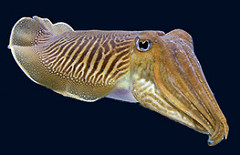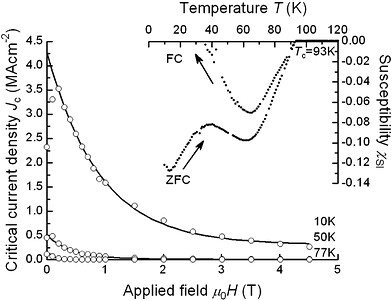UK chemists have used cuttlefish bones to template the growth of new superconductors that have almost 100 times higher current density. The weight of 1 cm**3 of superconducting cuttlebone replica is 0.06 g, compared to 6.38 g in the case of an equivalent sized monolith of pure Y123. With an overall decrease in mass of two orders in magnitude, these materials could well find application in areas where weight is of critical importance, such as space-based and mobile device technologies. It is envisaged too, that our method could apply equally well in the synthesis of light and porous giant magnetoresistive, piezoelectric and ferromagnetic materials.

Cuttlefish

Cuttlefish bone templated superconductor
A very high critical current density using light weight material can enable far better magsails. These lightweight and high critical density superconductors could even enable ground launched magsails. They need to find a good way to reinforce the structural strength (perhaps carbon nanotubes) that do not reduce the critical current too far and they need to produce the superconductors in high volume and a reasonable cost and preferably in the form of wires. Note: they have proved that an ordered, macroporous morphology provides a greatly improved critical current density. Therefore, any other means of creating ordered macroporous morphologies (such as three dimensional nanostructuring) can be used as well and could allow for a better tuning of the critical current and structural strength properties.
The critical current density of the cuttlebone templated Y123 was measured at 1.6 MAcm−2 at 10 K and 1 T field. This is almost two orders of magnitude higher than that observed in a commercially available Y123 powder (Aldrich 99.9% — average particle size 5 µm), for which SQUID magnetometry revealed a Tc of 92 K and a critical current density of 0.02 MAcm−2 at 10 K and 1 T field.
Chart of current density and magnetic field strengthIn terms of mechanical strength, the cuttlebone-templated superconductors are self-supporting but very weak (
Brian Wang is a Futurist Thought Leader and a popular Science blogger with 1 million readers per month. His blog Nextbigfuture.com is ranked #1 Science News Blog. It covers many disruptive technology and trends including Space, Robotics, Artificial Intelligence, Medicine, Anti-aging Biotechnology, and Nanotechnology.
Known for identifying cutting edge technologies, he is currently a Co-Founder of a startup and fundraiser for high potential early-stage companies. He is the Head of Research for Allocations for deep technology investments and an Angel Investor at Space Angels.
A frequent speaker at corporations, he has been a TEDx speaker, a Singularity University speaker and guest at numerous interviews for radio and podcasts. He is open to public speaking and advising engagements.




Comments are closed.